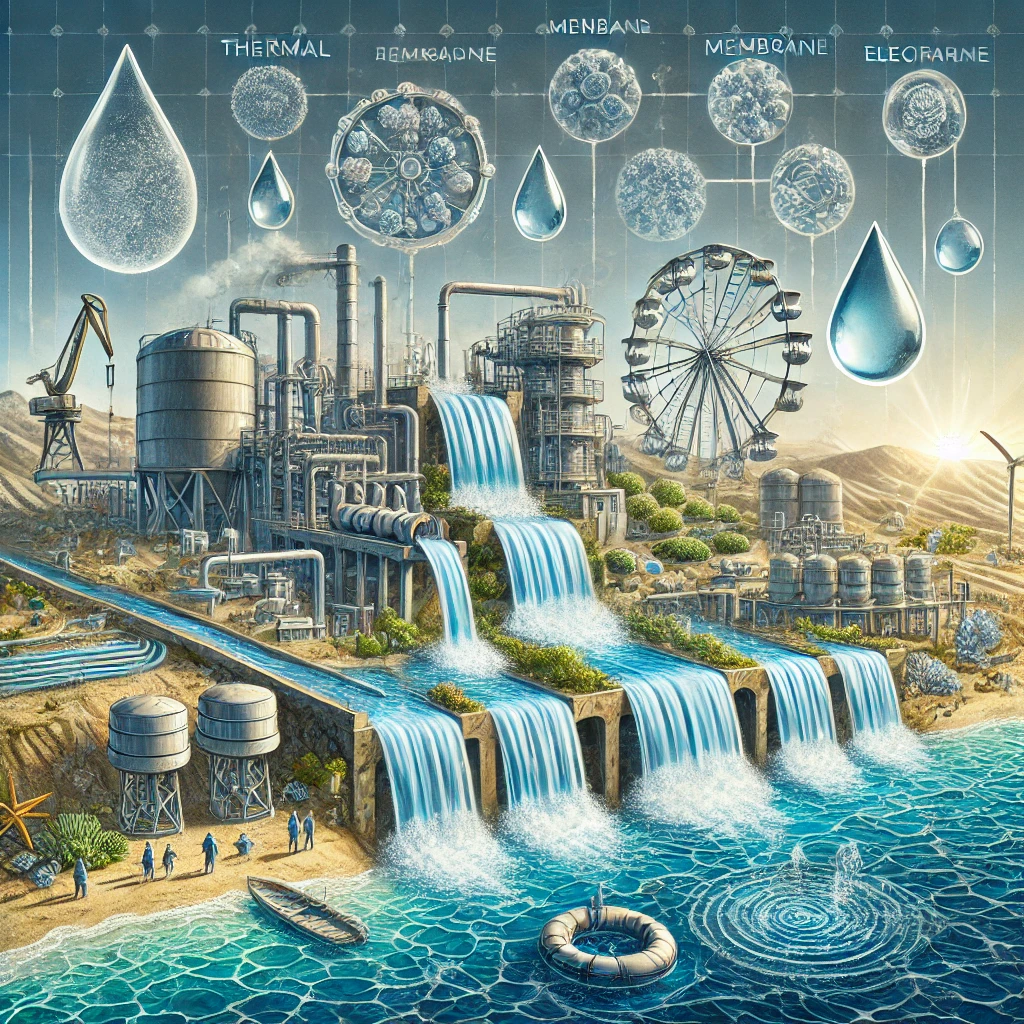
Could the vast oceans be our salvation in acute water scarcity? Desalination, an innovative technology, promises to transform the briny deep into potable treasures, potentially quenching the thirst of millions. Delve into the mechanics, from time-tested thermal methods to avant-garde electrodialysis, and explore the Middle East’s reliance on this life-sustaining technique. However, like any modern marvel, desalination has economic, energetic, and ecological conundrums. Join us as we navigate the promise and pitfalls of turning the sea into a freshwater fountain for the future.
Understanding Desalination: A Solution to the Global Water Crisis
What is Desalination? Desalination is the sophisticated process of extracting salts and other minerals from seawater or other saline sources to yield potable water. It transforms seawater into freshwater, making it suitable for human consumption and irrigation. Delving into the methodologies, three primary types of desalination techniques have been developed:
- Thermal Desalination: Leveraging heat, this technique involves the evaporation of seawater, followed by the condensation of its vapor to yield fresh water. Recognized as one of the earliest and most established desalination technologies, it is noteworthy that it also demands significant energy consumption.
- Membrane Desalination: This process effectively segregates salts from seawater by deploying a semi-permeable membrane. It currently stands as the predominant desalination technology, and thanks to relentless innovations, its efficiency and cost-effectiveness are continually enhancing.
- Electrodialysis: This modern approach uses electric fields to separate salt ions from seawater. While relatively nascent, its efficiency and affordability are progressively improving.
The Gravity of Global Water Shortage Water scarcity is not merely a regional concern; it’s a global predicament. Mounting demands, spurred by population surges, industrial expansion, and unpredictable climate change shifts, intensify this crisis. To provide a perspective, the World Economic Forum categorizes water scarcity among the top five global risks when gauging impact.
The Middle East serves as a pertinent case study. Defined by its arid climate and sparse freshwater reserves, the region deeply feels the water crisis. Here, desalination is not just an alternative but a lifeline, playing a pivotal role in satiating the water needs of its inhabitants.
Desalination: The Road Ahead The promise of desalination as a significant freshwater source is undeniable. However, it doesn’t come without its set of hurdles:
- Cost: A paramount constraint is the financial aspect. Factors such as the employed technique, plant location, and energy prices influence the cost matrix of desalination. Nonetheless, there’s a silver lining: technological advancements are steadily driving down these costs.
- Energy Consumption: Desalination plants’ high energy requirements can pose challenges, especially in areas where energy resources are limited or exorbitantly priced. Innovations are underway to make the process more energy-conservative.
- Environmental Concerns: Post-desalination, the resultant concentrated saltwater, or brine, poses ecological threats, potentially jeopardizing marine ecosystems. Current research is focused on minimizing these impacts.
In Conclusion, Desalination, with its potential to alleviate the global water crisis, is poised to be a game-changer. While challenges exist – from economic to ecological – the trajectory indicates a future where, with sustained innovation, desalination will be integral in quenching the world’s thirst.